How to make a $9 supercomputer
Computers no longer need to be an expensive purchase

How to make a $9 supercomputer
The year was 1999, the tech world was in the grip of the 'Y2K bug' and two computer chip makers were going at it, hammer and tongs, in the race to be first to reach the 1GHz mark.
By early-March the following year, the first desktop computer to reach the 1GHz milestone had arrived in Australia. It was the 'Select 1000' from US computer company Gateway and at that time, it was state-of-the-art – a 1000MHz AMD Athlon processor, 128MB of memory and 34GB hard drive. It even came with a shiny new 17-inch CRT (TV tube) monitor. The price? A cool $5999.
Wind the clock forward 15 years and another new 1GHz computer has made its debut, this time on Kickstarter, called CHIP. In addition to its 1GHz processor, you'll find 512MB of RAM and 4GB of on-board flash. Unlike the Gateway Select, CHIP also packs in 802.11n Wi-Fi and Bluetooth 4.0 wireless connectivity.
Its price also finishes with a '9'. The difference is here, that '9' is the only digit.
It's taken 15 years, but a 1GHz computer has now fallen in price from $5999 to just $9.
(We're) Allwinners
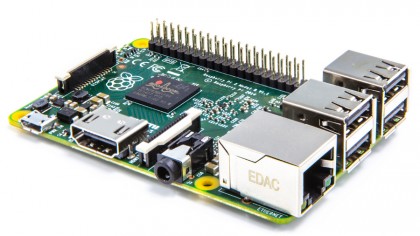
Okay, that might be a stretch considering what that $9 does and doesn't include, but it doesn't lessen the achievement. The popular Raspberry Pi revolutionised low-cost computing in 2012 with its credit-card form factor and US$25 price tag, but CHIP clearly aims to take that to the next level.
It's built around the new 1GHz R8 'system on a chip' (SoC) processor from Chinese chipmaker Allwinner and is an updated version of another chip, the single-core A13, made popular in early Android tablets from China's Shenzhen tech district. If you're not familiar with Allwinner, it's the chipmaker Hewlett-Packard has tapped on numerous occasions to power some of its tablets, including the 7- and 8-inch G2 Android models.
Sign up to the TechRadar Pro newsletter to get all the top news, opinion, features and guidance your business needs to succeed!
Like an increasing number of chipmakers, Allwinner gets a good deal of its tech from chip designer ARM, the name behind most smartphones and tablets, Android and iOS. Still, that new R8 chip features a single-core Cortex A8 design that should push CHIP about 30-50% faster than the original Raspberry Pi.
What's it for?

The Raspberry Pi has been used to teach everything from coding robots to capturing images at the edge of the earth's atmosphere and if anything, CHIP has the potential to be even more versatile.
For your $9, CHIP only provides composite-video output to a monitor or TV – the Kickstarter campaign requires you to cough up another $10 to grab a VGA adapter or another $15 for HDMI. But unlike the Raspberry Pi and many copies since, CHIP is modular – on the one hand, you can use the $9 computer to make gadgets faster and more powerful than popular 'Arduino' boards; on the other, plug in a video module and it becomes a fully-fledged Linux computer with wireless internet.
CHIP has a series of what are called 'general-purpose input-output' (GPIO) connections to add in your own electronics – sensors, LEDs, even small LCD panels. Other connections allow Lithium-polymer batteries (yes, it will charge those batteries, too). Raspberry Pi also has GPIO points, but use the Pi as a single-function computer to drive a robot or quadcopter and the extra HDMI and Ethernet ports come along for the ride unnecessarily. With CHIP, they don't, reducing its size and cost.
But its CHIP's inclusion of 802.11n Wi-Fi and Bluetooth 4.0 in that $9 that not only makes it more versatile, it'll make CHIP ripe for use in the fast-growing market that combines the power of the internet with the ingenuity and imagination of the 'maker' community.
Meet your makers
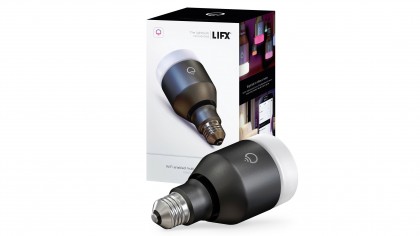
Essentially, CHIP becomes another player in the booming Internet of Things (IoT) market that appeals equally to commercial engineers and home hobbyists or 'makers' alike. But while global companies continue figuring out how to connect everything from cars to washing machines to the internet, the fast-falling cost of this technology means the maker community is equally equipped to churn out extraordinary gadgets.
And pretty extraordinary gadgets we've seen – from smart lighting products such as the LIFX wireless LED light bulb, invented by Australian designer Phil Bosua, to Oculus Rift, the 3D head-mount display originally created by 18-year-old Palmer Luckey in his parent's garage.
LIFX has since raised over US$13 million in funding, but it's Oculus VR that has become the 'poster child' for home inventors everywhere when it sold in March 2014 to Facebook in a cash and share deal worth a cool US$2 billion.
Modern-day Meccano
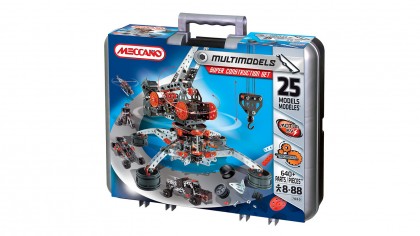
Englishman Frank Hornby's 1901-patented construction set that quickly became Meccano has taught and inspired imaginations for several generations. It's still available today, but the 21st-century digital construction set is the microcontroller, a computer chip with its own small amounts of RAM and flash storage enabling makers to create their own gadgets.
Today, Arduino is the central hub of the maker movement, using predominantly low-cost 8-bit microcontroller boards to help teach electronics engineering to a new generation of students, as well as powering everything from robots to 3D printers, quadcopters to wearables of all types.
But Arduino is continuing its move into a more-modern 32-bit processing world with the up-coming release of Arduino Zero, a compact board powered by a 72MHz Cortex M0+ microcontroller, originally from ARM – the same 'ARM' designing chips for smartphones, tablets and $9 computers.
Still, for single-function 'embedded' applications, you can go a lot cheaper than $9 – tiny microcontroller boards featuring the 8-bit STM8S103 chip sell on eBay for $1.50; easier-to-use Arduino Nano v3.0 boards for around $3.
Big-names move in
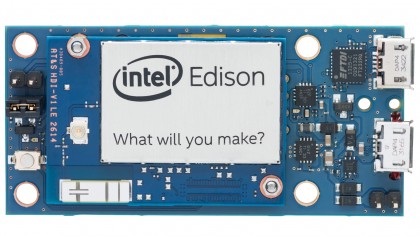
While CHIP and Raspberry Pi have garnered their share of limelight, this growth in the maker/IoT community hasn't escaped the notice of technology giants. Already, global chipmaker Intel has jumped onto the bandwagon with Galileo and Edison microcomputer boards, the latter featuring a new Intel triple-core (dual 500MHz Atom/single 100MHz Quark) processor.
Earlier this year, the chip giant announced Curie, a tiny 18-millimetre coat-button sized platform with Intel's first dedicated IoT chip, the 32-bit Quark SE, featuring 80KB of RAM, 384KB of flash storage, Bluetooth, sensors and power draw low enough to run from a coin battery.
But in May, Korean heavyweight Samsung decided to join the party, revealing its own ARTIK platform and following in Intel's footsteps to sign up to the Arduino-Certified program. But although it makes its own Exynos chips that power famous products like the Samsung Galaxy S6 smartphone, Samsung isn't wedded to them here.
Instead, the smallest of the three ARTIK boards uses tech from yet another chip designer called MIPS Technologies. MIPS started out as a research project at Stanford University in the mid-1980s and developed computer chip technologies that appeared in systems from Silicon Graphics and Digital Equipment Corporation (DEC).
ARTIK 1, 5, 10
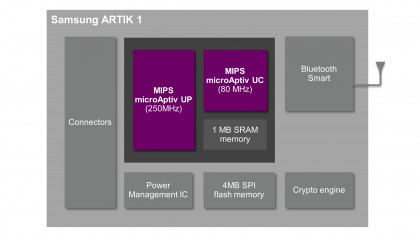
The ARTIK platform has three members so far – the ARTIK 1, ARTIK 5 and ARTIK 10. The ARTIK 1 runs a dual-core MIPS microAptiv processor, one core clocking at 250MHz, the other 80MHz and is just 12-millimetres square. In that space, you get a 9-axis motion sensor with accelerometer, gyroscope and magnetometer, 1MB of RAM, 4MB of flash storage, support for 800x480-pixel display and Bluetooth Low-Energy (BLE) 4.0. There's even a crypto-engine for securing data.
The ARTIK 5 packs a 1GHz dual-core ARM processor with Mali-400 graphics (similar to a Galaxy S2 phone), 802.11b/g/n Wi-Fi, 512MB of RAM, 4GB of flash and H.264 video decoding into a board just 29 x 25-millimetres.
The top-drawer ARTIK 10 includes Samsung's Octa core chip with 2GB of RAM, 16GB of flash storage and the ability to decode 1080p (full HD) H.264 video at up to 120 frames per second.
Aside from how it's received by the maker community, ARTIK will help Samsung achieve its own goals of having all Samsung product connected to the internet by 2020 – everything from air purifiers to ovens.
Microsoft joins Arduino
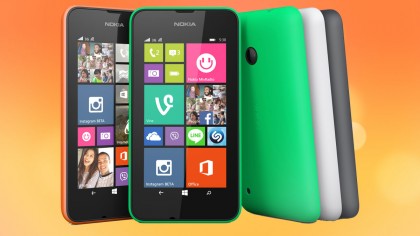
But in a sign of just how important the Maker market is becoming, software giant Microsoft has made the Windows 10 operating system heavily focused towards the maker and IoT communities. First, there'll be a free version of Windows 10 IoT Core for the recently-released Raspberry Pi 2. But further, Windows 10 has joined the 'Arduino-certified' program.
Microsoft's Arduino play comes in two parts – Windows Virtual Shield for Arduino will allow Arduino makers to patch into the hardware sensors of Windows phones such as the Nokia Lumia 530, and Windows Remote Arduino will enable software coders to add Arduino commands to their universal apps and add external hardware to their projects.
In fact, you can get started with it right now - Microsoft has released the open-source libraries to make Windows 10 and Arduino talk to each other and you can download them here.
How much is IoT worth?
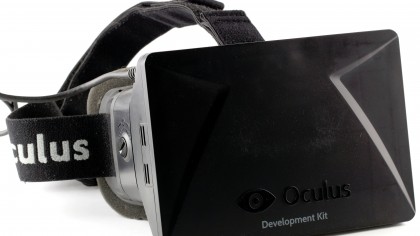
If you're thinking this global interest in all things IoT and 'maker' seems a bit overcooked, Oculus VR's US$2 billion sale is a good counter-argument. But you can be certain the combined might of Intel, Microsoft and Samsung can smell the potential coin to be made from IoT – and the numbers are extraordinary.
In April this year, analysts at IDC forecast the market for IoT technology in just the Asia/Pacific region alone, not including Japan, will reach a staggering US$583 billion by 2020, with the number of internet-connected 'things' topping a whopping 8.6 billion. With these numbers, you can only imagine what the US and European markets will be worth.
But with this much money in the offing, arguably the greatest surprise is the way these global tech giants are embracing the maker community with catch phrases like 'what will you make?' almost as numerous as IoT chips themselves.
Future tech - made by you!
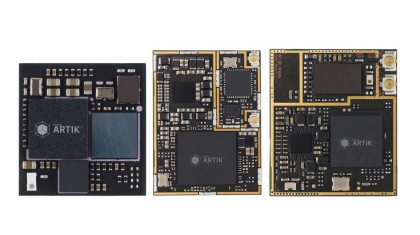
Why are they doing it? Because they well know another Oculus Rift could be waiting in the wings. Just as the iPhone killed off the MP3 player market, IoT spells danger and opportunity for established players in almost equal measure. It democratises computer engineering – Oculus Rift showed that anyone with a great idea now has access to the tools, software and hardware to turn that idea into reality.
To that end, Samsung is already working with Arduino to get ARTIK supported by the Arduino IDE (integrated development environment), the app most commonly used to code Arduino boards. The Arduino IDE itself is rudimentary by modern standards and not universally loved, but its ease of use has helped it become the rallying point for the major IoT platforms, from Intel Edison and Samsung ARTIK to Arduino and lesser known but highly-regarded platforms like Teensy.
During World War II, the codebreakers at MI6's famed Bletchley Park needed an automated way of helping crack German military codes. His superiors thought he was nuts, but after many months, electrical engineer Tommy Flowers developed the world's first all-electronic programmable computer called 'Colossus' in December 1943, made from radio spare parts. He had a second upgraded computer in operation by June 1944 in time for the D-Day Landings.
Flowers designed Colossus from scratch, one electronic component at a time. The power of today's microcontrollers not only gives you essentially the same tools corporate engineers play with, the simplified language used by the Arduino IDE means you can make your idea in a fraction of the time it used to take. Making your own tech today is far less 'Colossus' and much more 'modern-day Meccano'.
Start your imagination
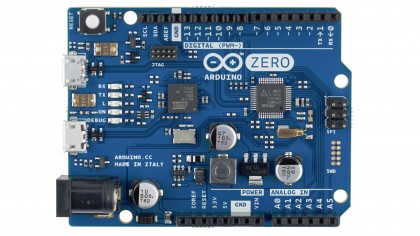
The $9 computer has been made possible by the relentless development of newer, faster, more power-efficient processors. And now Intel, Microsoft and Samsung are all very publicly promoting their toys to hobbyists, makers, STEM (science, technology, engineering and mathematics) students – anyone who has an idea they want to make.
But it's not all beer and skittles – there are risks with IoT. Apple co-founder Steve Wozniak thinks the IoT market has all the hallmarks of another tech bubble, not to mention the potential security risk in having so many appliances and gadgets connected to the Internet.
But you can still be a maker and forget IoT – not every gadget has to connect to the internet. And the more you understand how technology works – right down to the coding level – the more in control of your tech future you'll be.